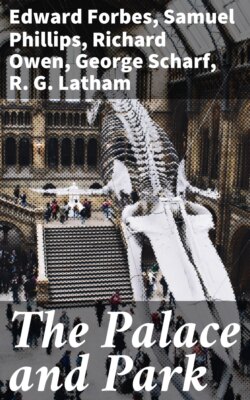Читать книгу The Palace and Park - Edward Winslow Forbes - Страница 45
На сайте Литреса книга снята с продажи.
ОглавлениеImmediately beyond the case which we have just examined will be found a model of the celebrated so-called gates of Somnauth. History and tradition have invested these gates with much interest. Nine centuries since, the temple of Somnauth was perhaps the richest shrine of rich India, and the splendid stronghold of its idolatry. There are many records of its unequalled riches—the revenues of 2000 villages are said to have been allotted for the maintenance of its establishment. In 1025, the sultan Mahmoud crossed the Indus from Ghuznee, and after many battles advanced to the temple and sacked it. In the adulations of the conqueror Hindoo paganism was said to have then irrecoverably bowed before the sword and faith of Mahomet. The avarice, however, of Mahmoud probably received greater gratification than his religious fervour. He is traditionally said to have carried the carved sandal-wood gates of the temple with him to Ghuznee, and to have made them the doors of the splendid mausoleum which he built for himself. When Ghuznee was taken by the British under the presidency of Lord Ellenborough, the doors (of which the present models are copies) were taken from the tomb, and invested with high interest on account of their traditional origin, but the style of art and inscriptions upon the gates themselves prove that in all probability they formed part of the tomb from which they were taken and were built with it. Near to this model will also be found some very finely carved furniture, and a case filled with a magnificent collection of Indian works, amongst which may be specially pointed out the beautiful and rich specimens of jewellery from Delhi and other provinces, some elaborate carvings in pearl, ivory, and tortoiseshell, and the gold-worked muslins for which, through many ages, India has been renowned.
The gallery over the Egyptian, Greek, and Roman Courts contains an interesting collection of Photographs, &c., illustrative of Oriental Architecture, and the various styles exemplified below, amongst which the Egyptian remains are particularly to be remarked. The full-sized casts from the original wall sculptures, which, are copied in the Egyptian Court below, will be found along this Gallery, as also various architectural and sculptural remains of classic times.
We should now descend the staircase to the left, and, crossing over to the eastern end of the Great Transept, we can reach the basement story of the building, which is on a level with the first Terrace. The Basement has been divided into two departments: that to the north is allotted to the exhibition of Agricultural Implements, &c.; in that to the south is arranged the important exhibition of Machinery in Motion.
